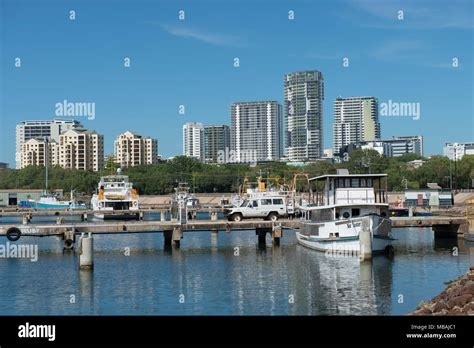Chart Color Schemes
est. as @ -- *
ABS ERP | -- people | --
2021 Census | -- people
Sales Activity
Curious about local property values? Filter the chart to assess the volume and appreciation (including resales) trends and regional comparisons, or scroll to the map below view this information at an individual property level.
Find a Recent Sale
Sales Detail
Population
Alawa is positioned among the lower quartile of areas assessed nationally for population growth based on AreaSearch's assessment of recent, and medium term trends
Alawa's population was around 2,078 as of the 2021 Census. By Aug 2025, it is estimated to be approximately 2,208, reflecting an increase of 130 people (6.3%) since the census. This growth is inferred from the ABS's estimated resident population of 2,206 in June 2024 and address validation since the Census date. Alawa's population density as of Aug 2025 is around 1,780 persons per square kilometer. The area's population growth since the census is within 1.3 percentage points of the SA3 area (7.6%), indicating competitive growth fundamentals. Overseas migration contributed approximately 77.6% of overall population gains during recent periods in Alawa.
AreaSearch adopts ABS/Geoscience Australia projections for each SA2 area, released in 2024 with a base year of 2022. For areas not covered by this data and post-2032 growth estimation, AreaSearch applies growth rates by age cohort, as provided by the ABS in its latest Greater Capital Region projections (released in 2023, based on 2022 data). Considering projected demographic shifts, Alawa is expected to grow by approximately 213 persons to 2041, with an increase of around 9.6% in total over the 17-year period.
Frequently Asked Questions - Population
Development
The level of residential development activity in Alawa is very low in comparison to the average area assessed nationally by AreaSearch
Alawa has averaged zero new dwelling approvals annually. Development approval data is produced by the ABS on a financial year basis, with two dwellings approved over the past five financial years (between FY20 and FY25), and zero approvals so far in FY26. The average number of new residents per year per dwelling constructed over these five financial years was 0.8. This indicates that new supply is keeping pace with or exceeding demand, offering ample buyer choice and creating capacity for population growth beyond current forecasts.
New dwellings are developed at an average value of $172,000, which is below regional norms, reflecting more affordable housing options for purchasers. There have been $118,000 in commercial approvals this financial year, demonstrating the area's residential nature. Compared to Greater Darwin, Alawa records markedly lower building activity (81.0% below regional average per person), which generally supports stronger demand and values for established dwellings. This is also below average nationally, reflecting the area's maturity and possible planning constraints. Recent building activity consists entirely of detached dwellings, preserving the area's suburban nature with an emphasis on detached housing attracting space-seeking buyers. With approximately zero people per dwelling approval, Alawa shows characteristics of a growth area.
Frequently Asked Questions - Development
Infrastructure
Alawa has limited levels of nearby infrastructure activity, ranking in the 2ndth percentile nationally
Four projects in total have been identified by AreaSearch as potentially impacting the area: Royal Darwin Hospital's Mental Health Inpatient Unit and CSSD upgrades, Casuarina Square Redevelopment, CDU's Centre for Better Health Futures, and Social Housing Accelerator Payment (SHAP) - Greater Darwin/Nightcliff.
Professional plan users can use the search below to filter and access additional projects.
INFRASTRUCTURE SEARCH
Frequently Asked Questions - Infrastructure
Middle Arm Sustainable Development Precinct
Massive $1.5 billion sustainable industrial precinct across 1,500 hectares. Focus on renewable hydrogen, carbon capture, advanced manufacturing and minerals processing. Expected to create 20,000 jobs and transform NT economy. Joint Australian and NT Government project.
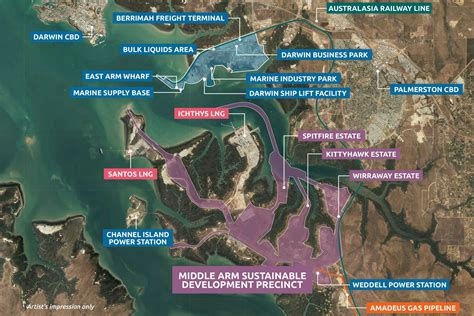
Royal Darwin Hospital (RDH) Mental Health Inpatient Unit and CSSD upgrades
Three-storey mental health facility on the RDH campus delivering 24 beds (18 inpatient + 6-bed Stabilisation Assessment and Referral Area) connected to the Emergency Department by an enclosed elevated walkway, plus upgrades to the Central Services Sterilisation Department. Managing Contractor: Sitzler. Architects: Ashford Architects (now Ashford Lamaya). Construction commenced 2023 and is tracking toward completion in 2025.
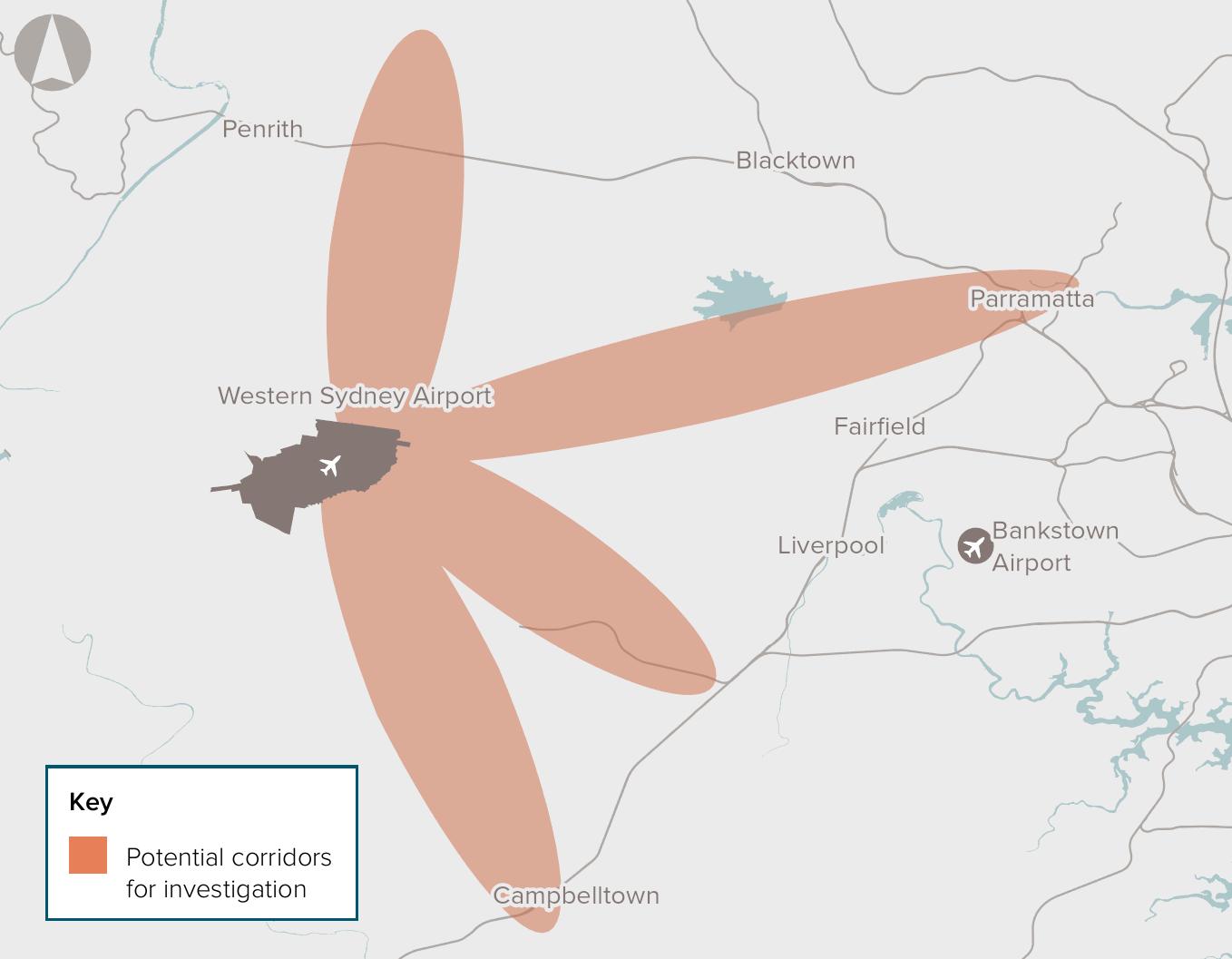
John Stokes Square Redevelopment
The Nightcliff area in Northern Territory is undergoing redevelopment, with works in the John Stokes Square already underway. The redevelopment will feature a 24 Hour Police Station, specifically designed public housing including for seniors and people living with disabilities, a pedestrian-friendly link between the Nightcliff Village and Nightcliff Shopping Centre, open space and the expansion of local services. The construction of these important amenities will create more than 250 local jobs over the lifetime of the project.

Nightcliff Police Station
New build police facility delivered as part of the John Stokes Square redevelopment. The 24/7 station provides patrol capacity, muster and interview rooms, community space, breakout areas, weapons and evidence storage, car parking and secured perimeter. Architectural facia references Nightcliff Foreshore colours. Construction commenced in 2020 and completion occurred in 2021.
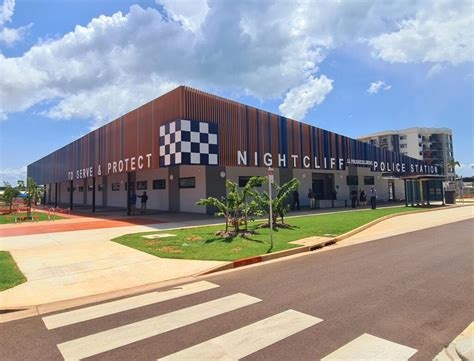
Berrimah North Area Plan
Strategic area plan included in the NT Planning Scheme (since December 2014) guiding future land use west of Vanderlin Drive, enabling coordinated commercial, light industrial, employment and residential development with supporting infrastructure. Current NT Budget (2025) includes headworks funding to support implementation across the Greater Darwin region, including Berrimah North.
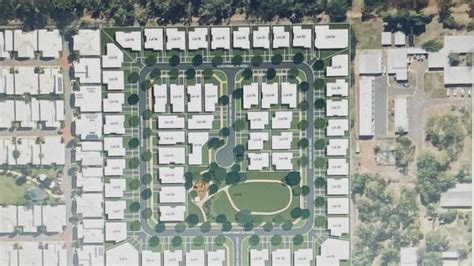
Marine Industry Park
Marine and offshore industries servicing hub at East Arm, Darwin. Stage 1 planning approval is secured for a purpose-built industrial subdivision near the new Darwin Ship Lift, with expressions of interest open for serviced lots. Existing common-user facilities include an all-tide barge ramp (first point of entry) and a secure hardstand supporting storage and fabrication activities.
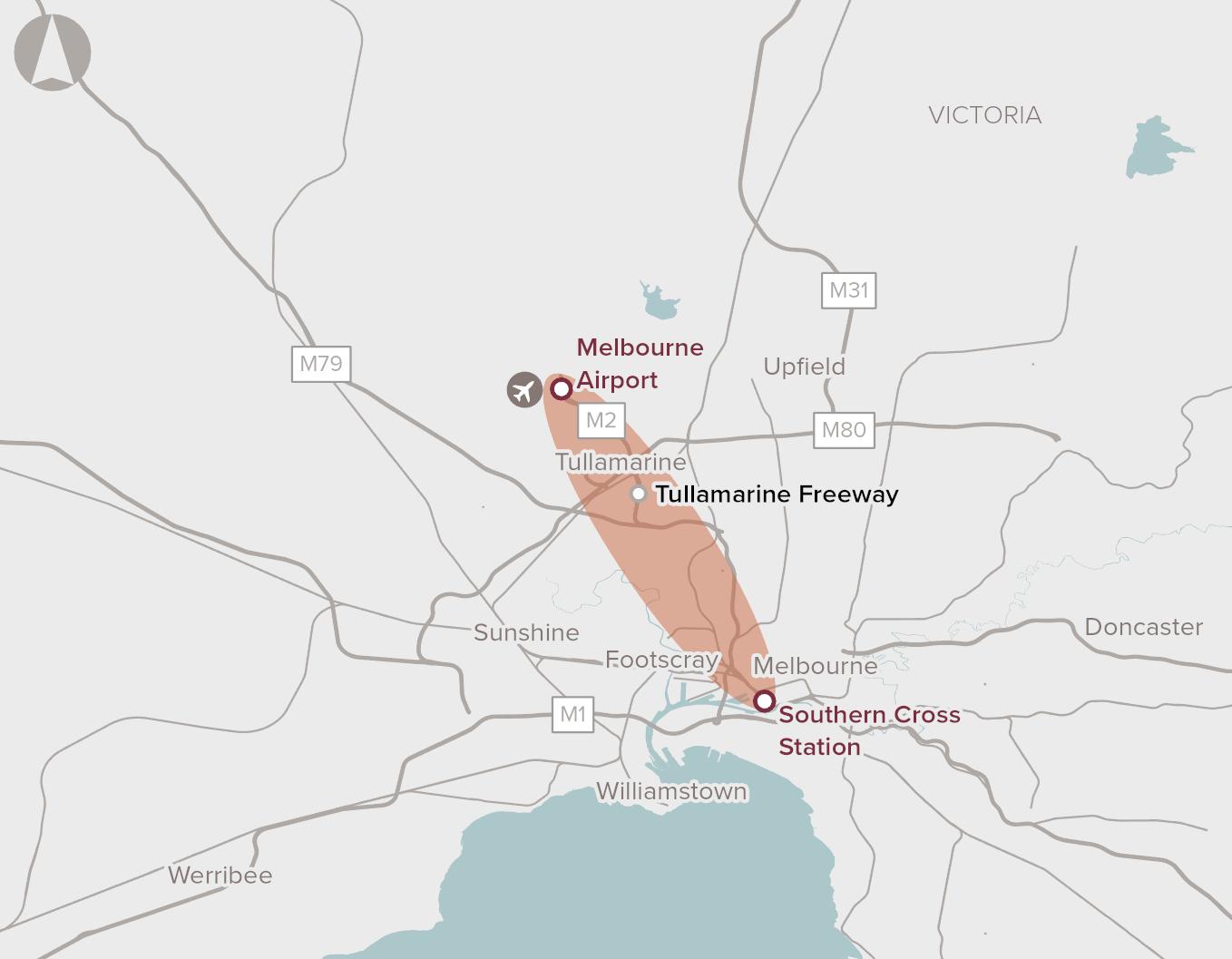
Social Housing Accelerator Payment (SHAP) - Greater Darwin / Nightcliff
Commonwealth-funded SHAP program delivering up to 100 new social and accessible homes across Greater Darwin, Katherine, Tennant Creek and Alice Springs. In Darwin's northern suburbs (including around Nightcliff), the NT Government commenced works in October 2024 with the first eight homes on vacant lots in Rapid Creek, Tiwi and Wanguri. Homes are being built to adaptable standards to better suit local climate and accessibility needs.
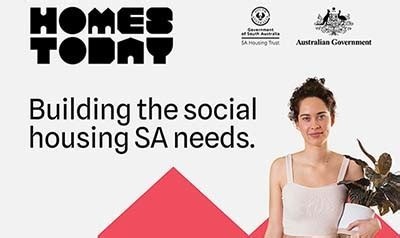
Darwin Corporate Park
Darwin Corporate Park is a premier business park for mixed use commercial office space located in what is now recognised as the centre of greater Darwin.

Employment
Employment conditions in Alawa remain below the national average according to AreaSearch analysis
Alawa has an educated workforce with significant representation in essential services sectors. The unemployment rate was 4.5% as of June 2021, with estimated employment growth of 2.1% over the past year.
As of June 2025, 1,164 residents were employed while the unemployment rate was 1.5% higher than Greater Darwin's rate of 3.0%. Workforce participation in Alawa was lower at 65.3%, compared to Greater Darwin's 69.7%. Dominant employment sectors among residents include health care & social assistance, public administration & safety, and accommodation & food. Health care & social assistance had notable concentration with employment levels at 1.2 times the regional average.
Conversely, public administration & safety showed lower representation at 14.6% versus the regional average of 19.5%. The area offers limited local employment opportunities as indicated by Census working population vs resident population count. During the year to June 2025, employment levels increased by 2.1%, and labour force increased by 2.9%, leading to a rise in unemployment by 0.7 percentage points. By comparison, Greater Darwin recorded employment growth of 2.9% with unemployment falling marginally. State-level data from Sep-25 shows NT employment grew by 1.0% year-on-year (adding 1,710 jobs), with the state unemployment rate at 4.2%, outperforming the national average of 0.26%. Jobs and Skills Australia's national employment forecasts from May 2025 project national employment growth of 6.6% over five years and 13.7% over ten years, with varying rates between industry sectors. Applying these projections to Alawa's employment mix suggests local growth of approximately 6.6%% over five years and 13.7% over ten years.
Frequently Asked Questions - Employment
Income
Income analysis reveals strong economic positioning, with the area outperforming 60% of locations assessed nationally by AreaSearch
Alawa's median taxpayer income was $54,865, with an average of $63,896 according to postcode level ATO data aggregated by AreaSearch for the financial year ended June 2022. This is lower than the national average, contrasting with Greater Darwin's median income of $65,522 and average income of $75,260 in the same period. Based on Wage Price Index growth from July 2022 to March 2025, estimated median and average incomes for Alawa are approximately $60,593 and $70,567 respectively. Census data from 2021 shows that income levels in Alawa cluster around the 70th percentile nationally. Income distribution indicates that 34.8% of Alawa's population (768 individuals) falls within the $1,500 - $2,999 range, similar to the broader trend across regional areas where 36.7% fall in the same category. Housing accounts for 13.8% of income, while strong earnings place residents within the 75th percentile for disposable income. The area's SEIFA income ranking places it in the 5th decile.
Frequently Asked Questions - Income
Housing
Alawa is characterized by a predominantly suburban housing profile, with above-average rates of outright home ownership
Alawa's dwelling structures, as per the latest Census, consisted of 88.0% houses and 12.0% other dwellings (semi-detached, apartments, 'other' dwellings). In comparison, Darwin metro had 68.4% houses and 31.6% other dwellings. Home ownership in Alawa was higher at 23.8%, with mortgaged dwellings at 39.4% and rented ones at 36.8%. The median monthly mortgage repayment in Alawa was $1,777, lower than Darwin metro's average of $2,028 and the national average of $1,863. Median weekly rent in Alawa was $340, compared to Darwin metro's $350 and the national figure of $375.
Frequently Asked Questions - Housing
Household Composition
Alawa features high concentrations of group households, with a higher-than-average median household size
Family households constitute 76.0% of all households, including 33.6% that are couples with children, 26.2% that are couples without children, and 13.8% that are single parent families. Non-family households make up the remaining 24.0%, with lone person households at 17.4% and group households comprising 7.1% of the total. The median household size is 2.8 people, which is larger than the Greater Darwin average of 2.7.
Frequently Asked Questions - Households
Local Schools & Education
Educational attainment in Alawa aligns closely with national averages, showing typical qualification patterns and performance metrics
The area's university qualification rate is 35.7% among residents aged 15+, exceeding the Northern Territory average of 27.3% and the Australian average of 30.4%. Bachelor degrees are the most common at 20.5%, followed by postgraduate qualifications (11.5%) and graduate diplomas (3.7%). Vocational credentials, including advanced diplomas (10.3%) and certificates (20.2%), are held by 30.5% of residents aged 15+.
Educational participation is high with 35.5% currently enrolled in formal education. This includes 12.1% in primary education, 8.2% in tertiary education, and 6.8% pursuing secondary education. Nemarluk School and Alawa Primary School serve a total of 431 students. Alawa Primary School has an ICSEA score of 961, indicating typical Australian school conditions with balanced educational opportunities. Both schools focus on primary education, with surrounding areas offering secondary education options.
Frequently Asked Questions - Education
Schools Detail
Nearby Services & Amenities
Transport
Transport servicing is high compared to other areas nationally based on assessment of service frequency, route connectivity and accessibility
Transport analysis shows 14 active stops in Alawa, served by buses via 29 routes offering 2,162 weekly trips. Average distance to nearest stop is 150 meters. Daily trip frequency averages 308, or about 154 trips per stop weekly.
Service frequency averages 308 trips per day across all routes, equating to approximately 154 weekly trips per individual stop.
Frequently Asked Questions - Transport
Transport Stops Detail
Health
Alawa's residents are extremely healthy with both young and old age cohorts seeing low prevalence of common health conditions
Analysis shows strong performance in health metrics throughout Alawa. Both young and old age cohorts exhibit low prevalence of common health conditions.
Private health cover rate is approximately 51% of the total population (~1,130 people), slightly lagging behind the average SA2 area at 56.7% across Greater Darwin. The most prevalent medical conditions are arthritis and asthma, affecting 5.7% and 5.6% of residents respectively. 76.5% of residents declare themselves completely clear of medical ailments, compared to 77.0% in Greater Darwin. As of a certain date (not specified), 12.8% of residents are aged 65 and over (281 people). Health outcomes among seniors align with the general population's health profile, which is above average.
Frequently Asked Questions - Health
Cultural Diversity
Alawa is among the most culturally diverse areas in the country based on AreaSearch assessment of a range of language and cultural background related metrics
Alawa has a high cultural diversity, with 38.1% of its population speaking a language other than English at home and 41.5% born overseas. Christianity is the main religion in Alawa, making up 38.2% of people there. However, Buddhism is overrepresented compared to Greater Darwin, comprising 5.3% of Alawa's population versus 4.1%.
The top three ancestry groups are English (19.6%), Other (17.3%), and Australian (17.2%). Notably, Filipino (4.8%) and Greek (4.1%) are overrepresented in Alawa compared to regional percentages of 4.7% and 3.7%, respectively. New Zealand is also notably represented at 1.2%, higher than the regional average of 0.5%.
Frequently Asked Questions - Diversity
Age
Alawa's population is younger than the national pattern
Alawa's median age is 35 years, comparable to Greater Darwin's average of 34 years and marginally lower than Australia's national average of 38 years. Relative to Greater Darwin, Alawa has a higher concentration of residents aged 5-14 (15.1%) but fewer residents aged 25-34 (15.0%). Post-2021 Census data shows the 5-14 age group grew from 13.8% to 15.1%, while the 15-24 cohort increased from 11.1% to 12.3%. Conversely, the 25-34 cohort declined from 17.3% to 15.0% and the 65-74 group dropped from 8.6% to 7.5%. Demographic modeling suggests Alawa's age profile will significantly evolve by 2041. The 45-54 cohort shows the strongest projected growth of 32%, adding 92 residents to reach 383. Conversely, population declines are projected for the 0-4 and 65-74 cohorts.
